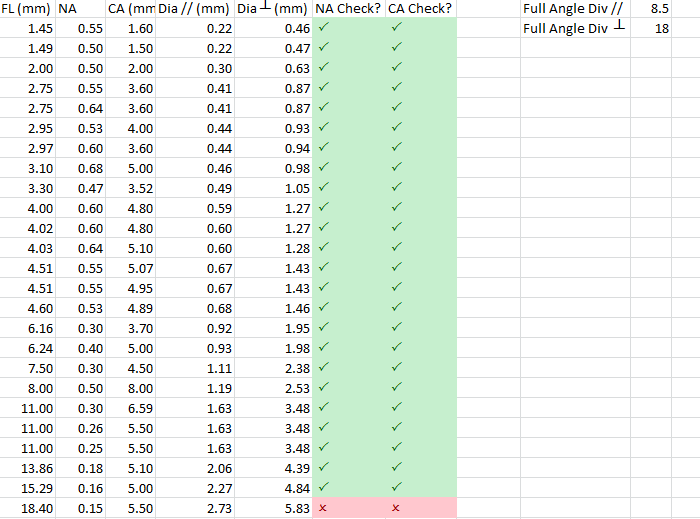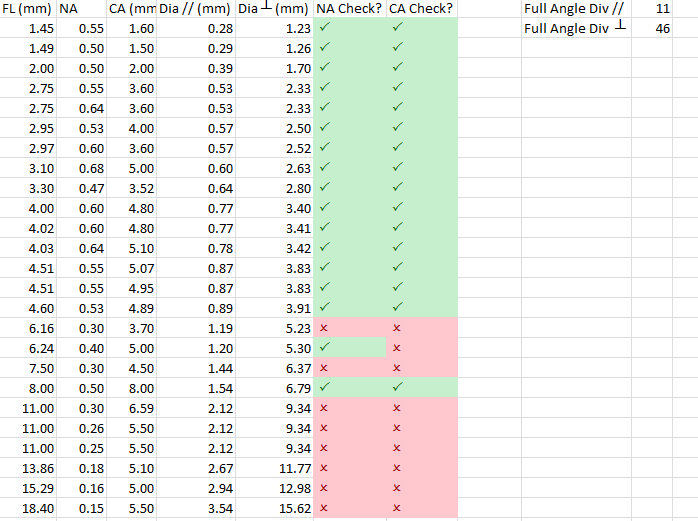I found a lot of threads comparing different collimators commonly used by hobbyists, but wanted more/better background on what the tradeoffs were for each variable in the equation, and, hopefully, a method to pick the correct focal length high-quality collimator for optimal beam shape. There's lots of talk about the "G-2" lens, or the "three-element lens," or the "acrylic lens," but little information on their actual shapes or focal lengths. And, of course, most of the "comparison" information is about POWER, which for me is a distant, secondary consideration. There is some, but not much, beam comparison information, and what there is is probably particular to the diodes used in the particular test.
I'm going to be building an RGB projector based on single-mode diodes and 3mm scanner aperture, so I'm interested in forming a 2.9mm beam with the best divergence characteristics I can get from each diode, and eventually, each PBS'd diode pair.
The question is, "how do you determine the collimator FL to produce a desired beam width w for a given diode?"
I started by trying to find out the FL of the commonly available lenses, but didn't come up with much. My starting assumption is that a high-quality molded aspheric collimator with AR coating will produce a much better beam than the "three-element glass lens" or the "G-2 lens." If that's wrong, well, I can stop now.But, since these lenses are expensive, one wouldn't want to select by trial-and-error.
I drew this diagram to try to help me work out the geometry, but not knowing the emitter sizes, or even the ballpark emitter sizes, makes it hard to know where to start.
If you figure that n/2 should be = (w/2) / tan(divergence half angle), then considering a fast-axis divergence of 22 degrees, one might expect a FL of ~ 7.7mm from the 'virtual origin' of the beam. But, since the emitter has non-zero size, where along the diagram do we place it, and how do we calculate the real needed FL?
And then, having fixed one axis, can we expand the other axis and get it to diverge at the same rate?
I am sure I am missing something basic, and perhaps when I get all of the required parts I can just set up them on a table somewhere and try to do some measuring, but it sure would be nice to have the theory down correctly before I start.
Thanks for any corrections or ideas.



 Reply With Quote
Reply With Quote




 But, I love to learn! If all else fails just the equations are a great place to start; I can plug them in to Excel and have them for reference when poring over optics catalogs.
But, I love to learn! If all else fails just the equations are a great place to start; I can plug them in to Excel and have them for reference when poring over optics catalogs. 
